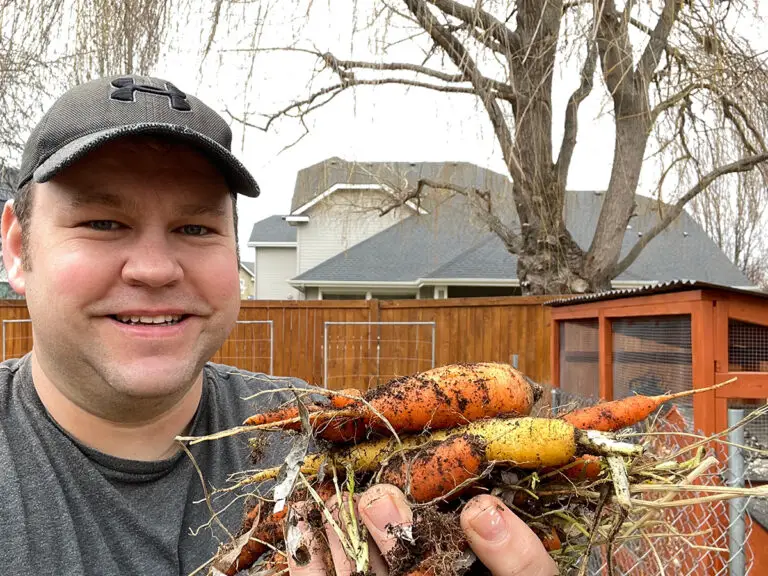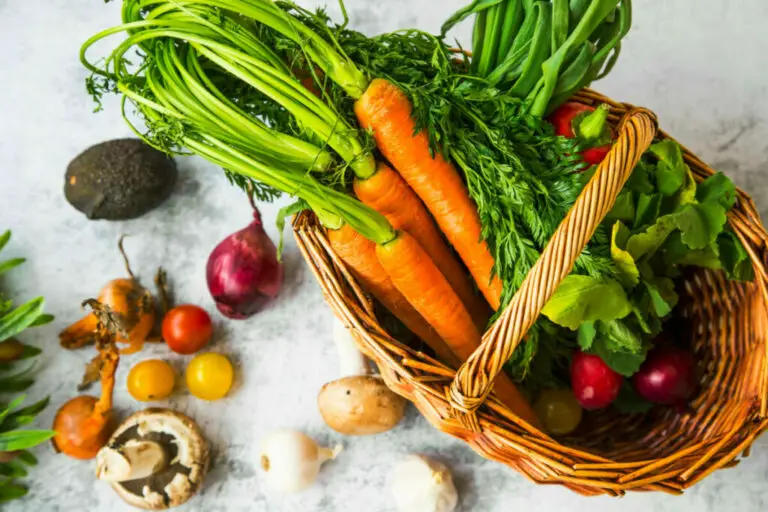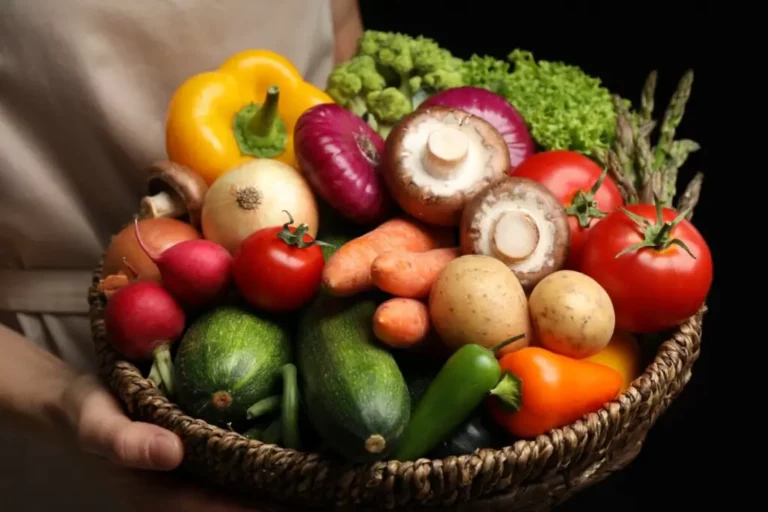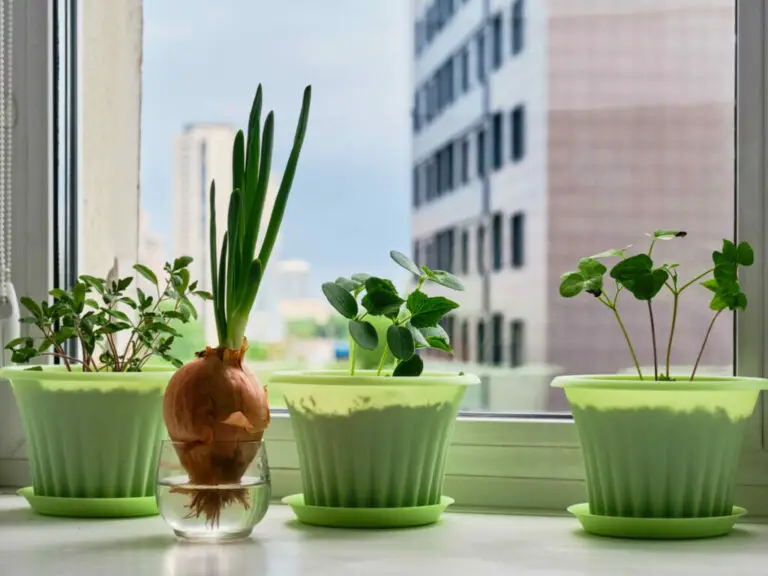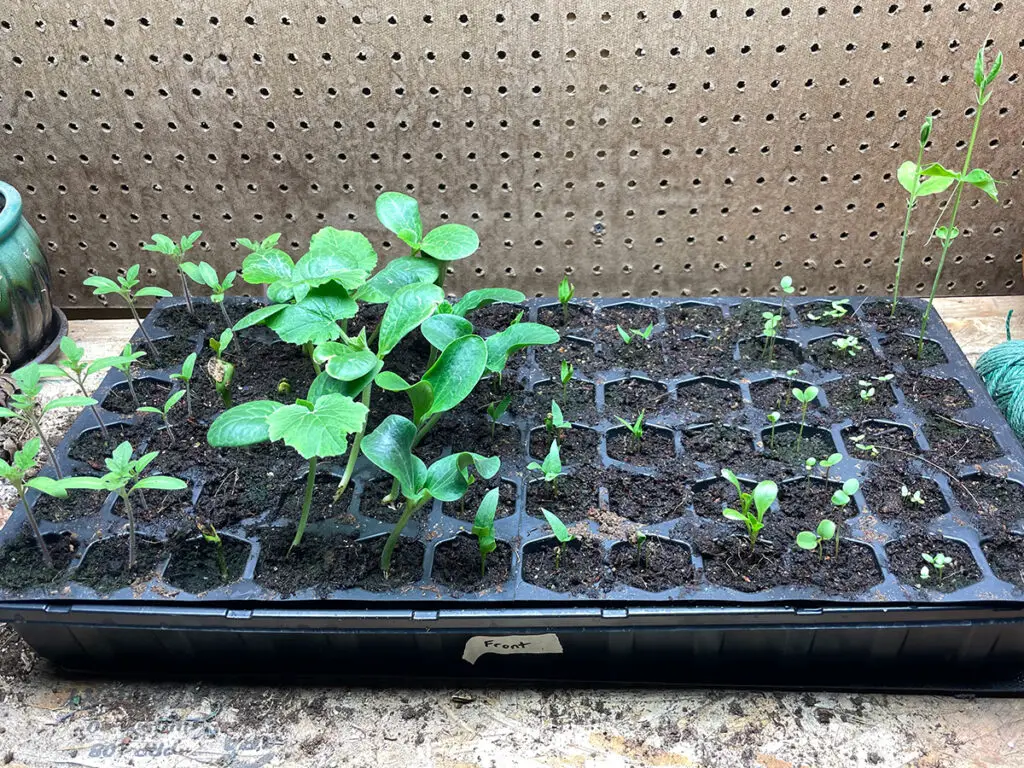
If you start your garden inside by planting seeds, you can reap many rewards. One of these includes an earlier and bigger harvest than if you wait for outdoor seasons. The question is when should you plant them?
Garden seeds should usually be started indoors 4-6 weeks before the first or final frost in the gardener’s given area, depending on the produce. Once temperatures reach above 60°F day and night, there is usually no risk of frost. When plants have 3-4 leaves, they can safely be transplanted outdoors.
Starting an indoor garden can be a great way to get a head start on gardening. So, how do you know when each vegetable or fruit seed is ready to be planted inside and then transported outdoors? To answer this and other questions you may have, continue reading!
Starting a Garden Indoors
If you are starting your garden inside, one of your primary missions is to speed up the germination process. Germination is basically the process of when a seed begins to grow. Before you begin your gardening endeavors, you’ll need to gather all of the right tools in order to be successful. Having the right setup will ensure happy and healthy plants, leading to a great harvest.
Tools You’ll Need:
- Sufficient space for your indoor garden
- Natural lighting or grow light
- Starting cells
- Growing mix
- Seeds
- Labels
- A moist, humid environment
- An outdoor garden space
What is a Frost?
A frost, also known as a freeze, among other names, is a thin layer of ice that happens when outdoor temperatures drop down to 32° F and under. Little crystals form coats on the leaves and surfaces of plants- damaging, and even killing crops. There are many things you can do to protect your gardens from freezes—in this case, planting your seedlings inside.
To plant your seedlings at the best time and line up with the year’s harvest, planting should begin 4-6 weeks before the season’s last frost. It is important to be aware of your local gardening seasons and track when frosts will be occurring so you can start your indoor gardening process in line with the timeframe of the temperatures.
After the days and nights are consistently 60° F and above, there is generally no longer a risk of a frost happening, and moving your plants to an outdoor garden should be safe.
What is Hardening Off?
Hardening Off is when you expose your plants to outdoor elements over small increments of time- like an hour or two a day- over a longer period of time, like a week or so, for example. Before transplanting your produce from your indoor garden to your outdoor garden, you will need to research when to start hardening off your fruits or vegetables in your area.
Overview
Almost all garden plants should be planted indoors 4-6 weeks before the last frost date and should then be transported after the risk of the first or last frost. However, the time after they should be transported outside varies a bit. Many gardens have some basic, favorite, fruits and vegetables which are commonly grown. This table is an overview of when they can be moved from their inside habitations to an outdoor garden.
| Plant | Season(s) of Harvest | Estimated Time to Move Outdoors After Risk of Frost |
| Tomato | Spring and Sumer | 6-8 Weeks |
| Carrots | Spring and Fall | 2 Weeks |
| String Beans | Summer and Fall | 2 Weeks |
| Squash | Fall | 2 Weeks |
| Zucchini | Fall | 2 Weeks |
| Watermelon | Summer | 1-2 Weeks |
| Bell Peppers | Summer and Fall | 1-3 Weeks |
| Pumpkins | Fall | 2 Weeks |
| Raspberries | Summer | 1 Week |
Tomatoes
Tomatoes are typically Spring and Summer blooming produce. When they are ready to pick depends on the species of tomato you plant. If you are planting your seedlings indoors, you will have an earlier harvest. They don’t do well in the cold, so you need to protect them. A fun thing about tomatoes is that they will continue to grow until the weather cools down, so as long as your plants are healthy, you could have a lot of yummy food to enjoy!
Just like the general rule applies to the other garden seedlings as well, tomato plants should be planted 4-6 weeks before the last frost. Once they are roughly 3 times the size of their planter, they are ready to be moved outside; this could take about 6-8 weeks.
| Plant | Season of Harvest | Estimated Time to Move Outdoors After Risk of Frost |
| Tomato | Spring and Summer | 6-8 Weeks |
Carrots
It is important to get the timing right if you are planning on starting the germinating process of carrots early. If they are transported outside too late, it can stunt their growth, but when done properly, you can expect an early and healthy harvest.
Carrots generally thrive in late Spring and in the Fall. After planting their seedlings indoors in an appropriate soil mixture about two inches deep, wait 2 weeks after the last frost until moving them to your outdoor garden.
| Plant | Season of Harvest | Estimated Time to Move Outdoors After Risk of Frost |
| Carrots | Spring and Fall | 2 Weeks |
String Beans
String beans and green beans are some of the easiest vegetables to grow and transplant. They follow the same basic guidelines as all of the others in this article. Simply avoid all risks of undergoing a frost. Oftentimes, they can be transplanted as early as two weeks after the final frost of the season, however, it could take longer.
One of the best ways to tell if a plant is ready and strong enough to be moved outdoors or not is if it has 3 or four leaves fully blossomed on its stem. If it does, and the temperatures outside are consistently 60° F or 65° F and above, your veggies can be moved outside to grow.
| Plant | Season of Harvest | Estimated Time to Move Outdoors After Risk of Frost |
| String Beans | Summer and Fall | 2 Weeks |
Squash
Squash grows very easily, but it is very delicate when it comes to its reactions to its environment and it is important to time when you plant it correctly, as its’ timeframe is rather narrow. Squash is also an extremely sensitive crop, so it is crucial that you are gentle when transplanting them from their indoor habitat to your outdoor garden. If they undergo trauma, they won’t survive.
| Plant | Season of Harvest | Estimated Time to Move Outdoors After Risk of Frost |
| Squash | Fall | 2 Weeks |
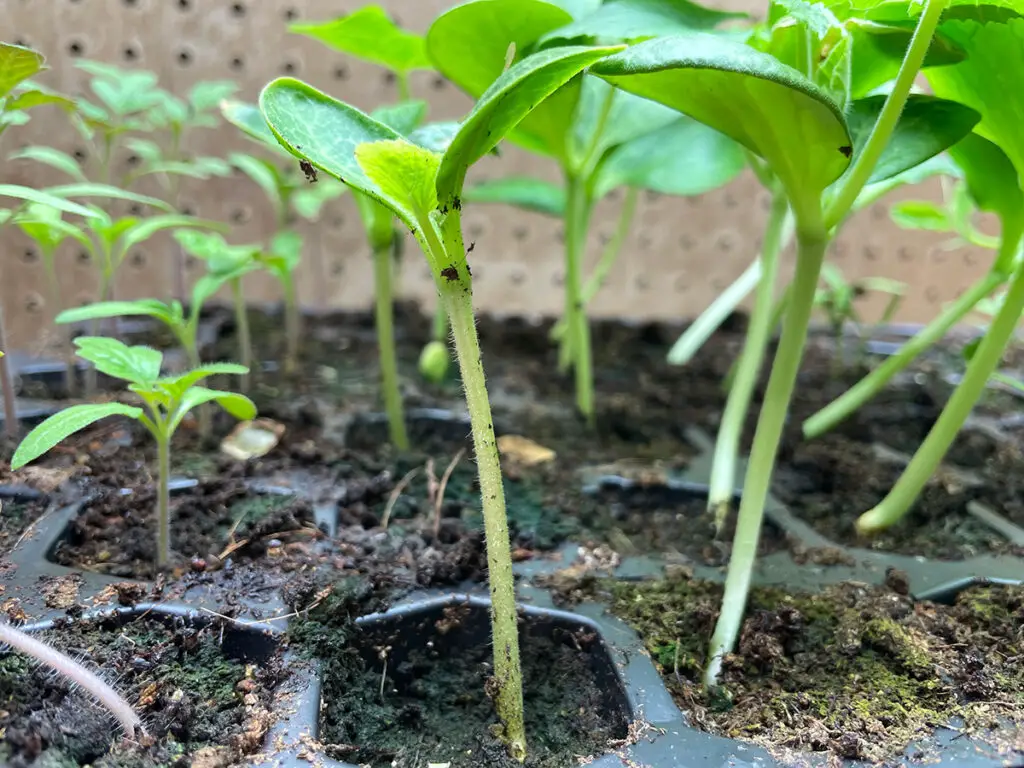
Zucchini
For a really healthy Zucchini plant, it is good to provide extra space and lots of sunlight. The plant in itself is fairly easy to grow so long as it is cared for kindly. You may find yourself needing a bit more patience with waiting for your Zucchini plants to grow enough leaves for them to be strong enough to move outside, but the best things in life take patience, right?
| Plant | Season of Harvest | Estimated Time to Move Outdoors After Risk of Frost |
| Zucchini | Fall | 2 Weeks |
Watermelon
Watermelon is a Summer fruit, as you probably know from memories of your childhood pool parties, summer bashes, and hot days with your best friends. Watermelon is the ultimate snack for a sunny day. As far as planting goes, Watermelon does best in warm soil.
When planting them inside, dig deep. The depth a watermelon seed needs to be buried is 4 times the size of the seed itself. Before planting them outside, they should undergo the hardening process for at least a week or two. They need their own space, and plenty of it to grow. Make sure to water your seeds, but keeping the soil on the drier side will yield the best results.
Be sure to research how much time they need to be hardened off. Watermelons do not like to be transplanted so you have to be meticulous when following steps in order to be successful- it is very doable though, so don’t stress.
| Plant | Season of Harvest | Estimated Time to Move Outdoors After Risk of Frost |
| Watermelon | Summer | 1-2 Weeks |
Bell Peppers
Bell Peppers need lots of sunlight and a healthy amount of moisture in their soil. The Soil should be warm. Fun fact: you can actually warm your outdoor soil too! They should be planted in the Spring and harvested in Summer and Fall seasons. Usually, you’ll see sprouts after about 2 weeks, but it could be less time or even take 5 weeks, so don’t be alarmed either way.
It is also totally okay to move your bell peppers to a larger pot during your waiting time to move them outside if they start outgrowing their starting cells. Another fun fact is that bell peppers and jalapenos follow many of the same planting rules, so if you want to start germinating some spicy peppers for your garden at the same time, you could.
| Plant | Season of Harvest | Estimated Time to Move Outdoors After Risk of Frost |
| Bell Peppers | Summer and Fall | 1-3 Weeks |
Pumpkins
Pumpkins may harvest in the Fall, but they also love growing in warm weather! The best type of soil to plant them in is slightly moist. If it is too dry or too wet, it won’t set up your plants to thrive. Just like all other garden fruits and vegetables, for a happy harvest, your calendar is the best way to ensure the safety of your garden.
Calendars will tell you when the frost dates are in your region and further allow you to be able to orient your gardening schedule around when the best times are to plant your vegetables and fruits.
| Plant | Season of Harvest | Estimated Time to Move Outdoors After Risk of Frost |
| Pumpkins | Fall | 2 Weeks |
Raspberries
Raspberries may be some of the most simple of all garden plants to transplant. Some of the main ingredients you need for successful growth are plenty of sunshine, well-draining soil, and of course, the seeds. You’ll likely be transplanting them in the Spring or Fall so as not to interfere with the blooming season. Assuming you are trying to germinate your seeds in time for the harvest, and depending on the breed of raspberries, there is a high chance that you’ll start this process in the Spring.
Another great thing about this fruit, aside from how delicious it is, is that it is an annual fruit. What this means is that it blooms each year without having to be planted again. Plant it the right way the first time, and you’re done forever! It could live for generations!
| Plant | Season of Harvest | Estimated Time to Move Outdoors After Risk of Frost |
| Raspberries | Summer | 1 Week |
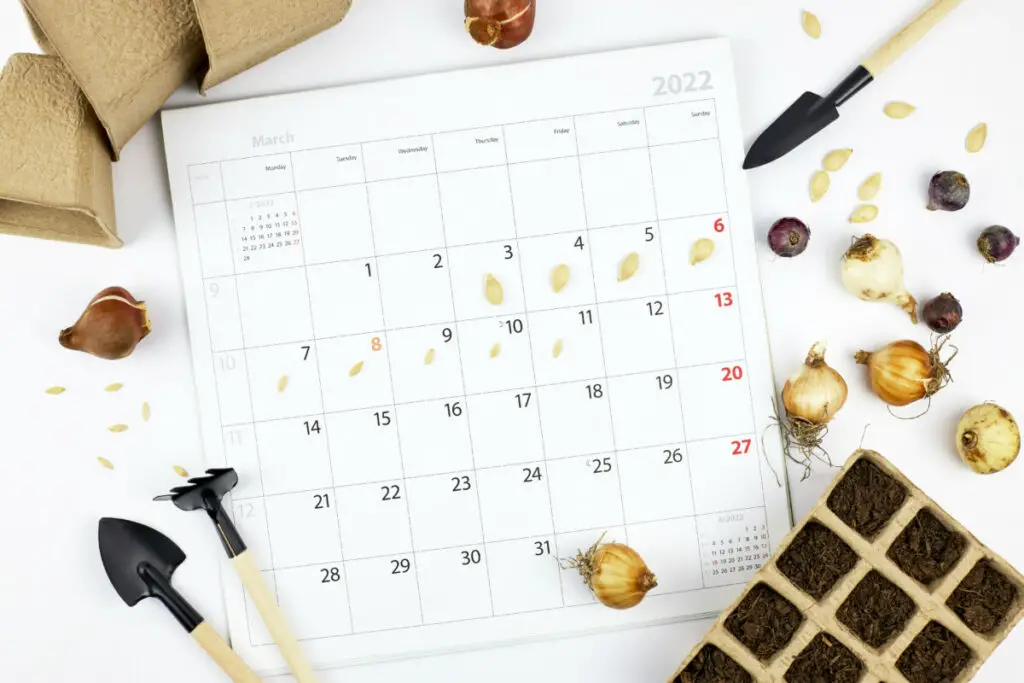
Before Transplanting
This probably sounds like a pretty obvious thing to say, but before you transplant your starts, make sure that you have cleared enough room outside for an outdoor garden. Each fruit or vegetable you plant has a specific type of soil, a preferable amount of sunshine and shade, and an amount of water it will need access to. In order to have a successful harvest, it will be important to prepare your outdoor space for your indoor seeds.
Recap
Planting your starts indoors can lead to an earlier harvest and protect your produce from the outdoor elements. It can also be fun! It isn’t too complicated, either. Plant each seed 4-6 weeks before the final frost of its designated season and wait until it is safe to transplant it. Generally speaking, once the temperature is consecutively 60° F or 65° F both day and night, and the plant has 3-4 leaves on it, it is strong enough and it is safe to move outside. Each plant has specific needs and instructions on when to transplant, though, so it is important to do your research.

